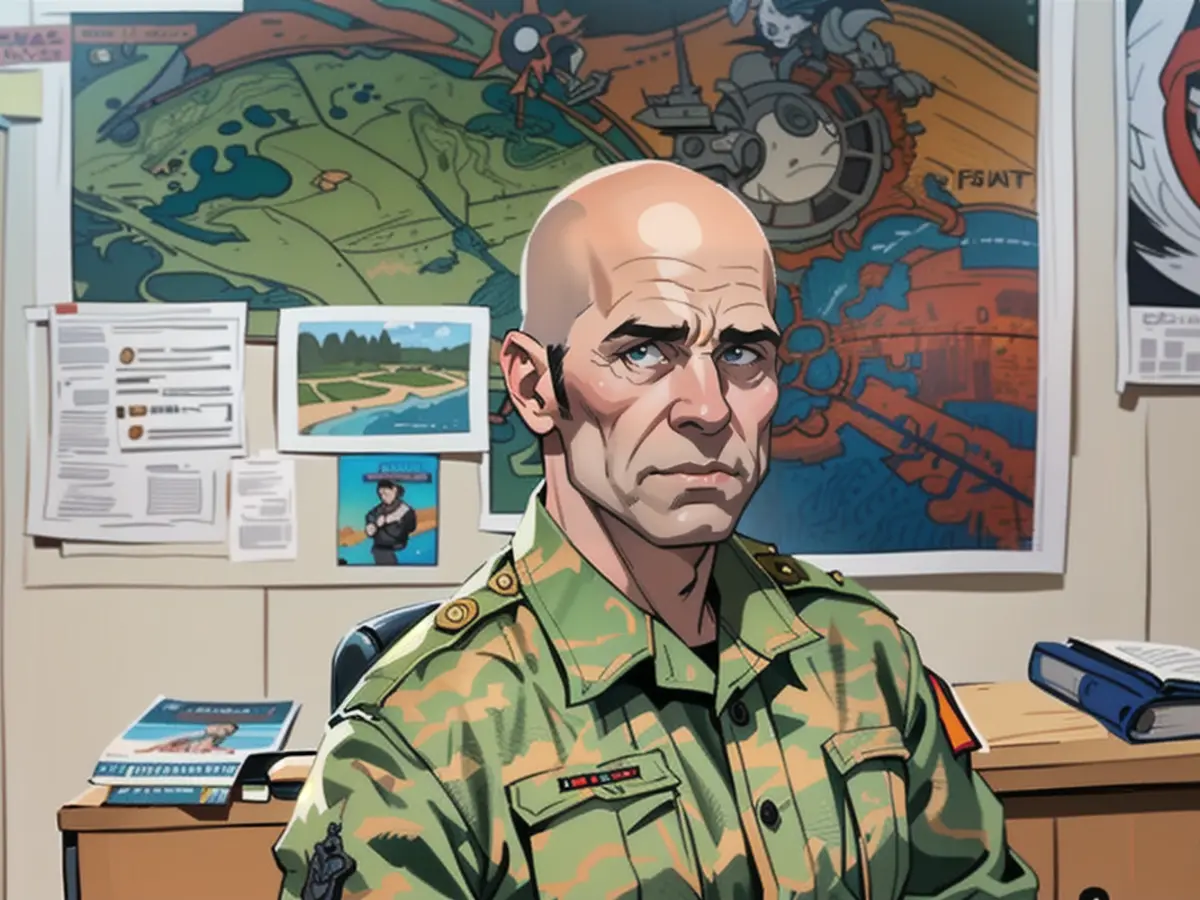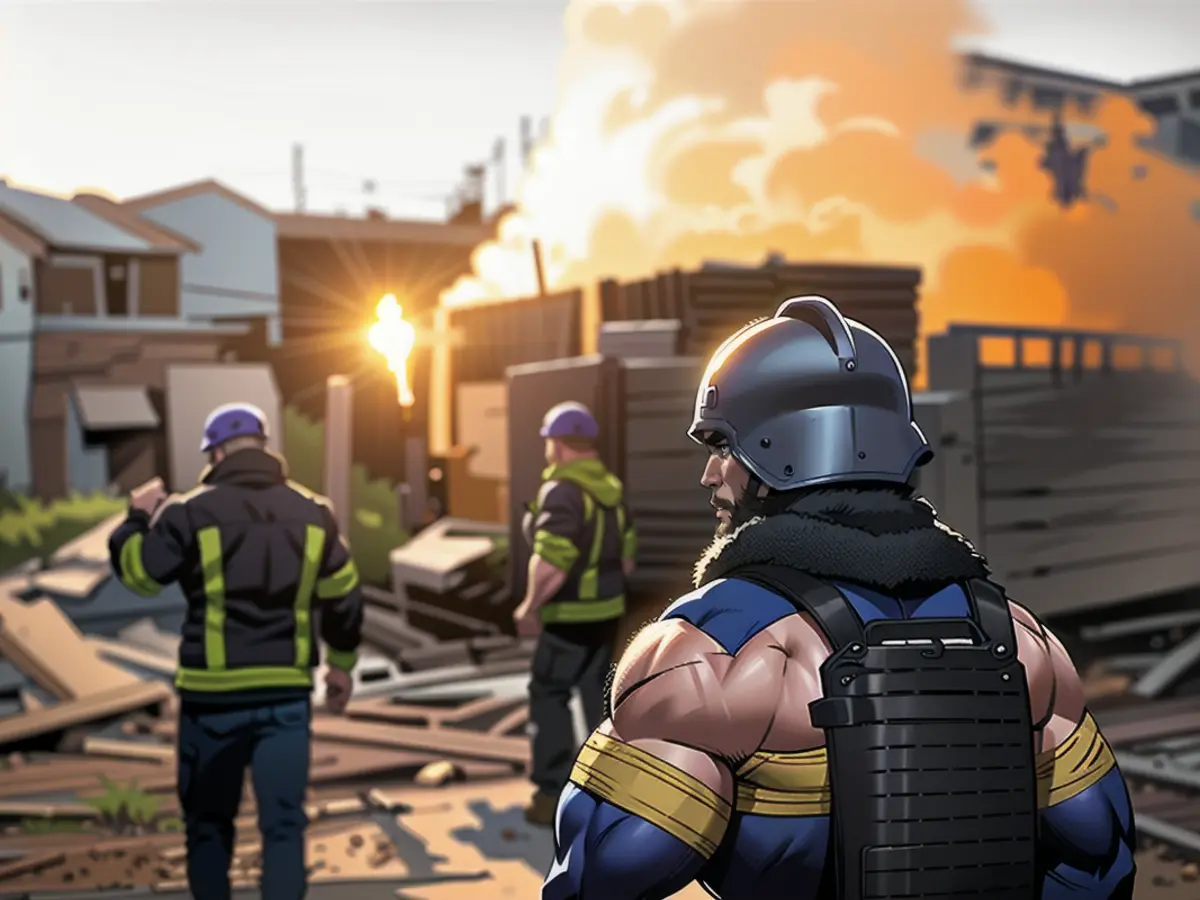Russia expands its territory by 200 kilometers.
Russia is moving toward the Ukrainian city of Kharkiv from the north. In an interview with ntv.de, Colonel Reisner discusses Russia's progress and the strategy behind it. He also explains the implications of the Russian Defense Minister Shoigu's dismissal.
ntv.de: What's the next Ukrainian city targeted by Russia? We hear it's Vovchansk, located north of Kharkiv. What's happening with the advancement there?
Markus Reisner: A new Russian force, known as "Sever," which means "North," has crossed the border north of Kharkiv in at least two places. In just under three days, they've advanced at least five kilometers. The Russians aim to achieve three objectives with this invasion in the area around Kharkiv. First, they're creating a buffer zone. As Russian towns along the border have been under attack, the Russians claim Ukraine is shelling these towns. The Ukrainians, on the other hand, deny these claims.
And the second objective?
Russia's second objective is to extend the front line by another 200 kilometers, which puts pressure on Ukraine as they need to deploy their resources in the Donbass and now also in the Kharkiv area. This tactic is known as a war of attrition, where the Russians tie down the Ukrainians in more areas, making it difficult for them to control the whole front. The third objective is to create a staging area for future attacks, allowing the Russians to potentially come closer to Kharkiv with more forces.
Is an attack on the bustling city imminent?
It's not close just yet. Three groupings, "Kursk," "Bryansk," and "Belgorod," are operating in the area. With between 50,000 and 70,000 soldiers, they're not quite enough to mount an imminent attack on Kharkiv. The Russians are currently still in front of the first Ukrainian defensive lines, which they may reach within the next 48 hours. There were few Ukrainian defensive positions directly on the border since they'd be under constant Russian fire.
Have the Ukrainians mobilized soldiers and resources into this region?
They've moved forces from the depths, some of which immediately marched to the border to occupy these prepped defensive positions. Forces have also been reallocated from other areas, such as from Zaporizhia. It depends on General Syrskyi's ability to balance between the troops needed in the Donbass and those required in the Kharkiv area.
Were the Ukrainians caught off guard in the north?
General Bugdanov and his deputy, General Skitbitski, both warned in recent weeks that a new attack on the Kharkiv area was upcoming. The build-up to this attack has been visible. The Russians have been carefully identifying Ukrainian artillery and defensive positions, targeting them to weaken the Ukrainian defenses. In addition, they've tried to force people to leave Kharkiv by destroying 80% of its critical infrastructure.
Is a large-scale Russian diversionary attack possible?
It is viable, but the primary strategy seems to be wear down Ukraine through a war of attrition. The Russians aim to tie down Ukraine along an increasingly extended front. If Kharkiv's defenses are held, the Russians will have to consider their next move. It could result in the front freezing again in the next few days, with the Russians stuck on Ukrainian defensive positions. Otherwise, the Ukrainians may have to withdraw more troops from other parts of the front.
Considering the imbalance in numbers between Russia and Ukraine, can the latter launch coordinated offensives elsewhere?
While the numbers are impressive, not all Russian soldiers are equally experienced. This gives Ukraine the potential to launch offensives elsewhere to put pressure on the Russians. They could potentially focus on the weaker Russian soldiers and exploit any weaknesses in the Russian forces. However, there are ongoing discussions about further Ukrainian mobilization. It remains to be seen when these troops will arrive at the front and whether they'll be fully trained.
Latest posts by The Modern Columbian (see all)- Betrayed by Banana Republics: An American’s Warning - September 30, 2022- Instruction: Cleaning and Organizing Your Home Terms: Infrastructure - September 30, 2022- Instruction: Cleaning and Organizing Your Home: Taking Stock Terms: Infrastructure - September 30, 2022
Last week, Ukrainian fighters in the Kherson region attempted to establish additional fronts across the Dnieper River near Krynky. Their intention was to force the Russians to redirect more troops towards the south.
When discussing the three motives behind Russia's invasion in the north, how significant is the fact that 180,000 rounds of ammunition from the Czech Republic are set to arrive in June, and American aid packages have not been fully transferred? Could Russia be seeking to grab as much territory as possible before these weapon shipments arrive?
Definitely, a fourth factor is at play here. Due to their scarcity of resources, Ukrainians are struggling to repel attacks. When the Czech ammunition arrives at the end of June, it will be sufficient for 30 days if 6,000 shells are fired daily. However, the Russians are firing 20,000 to 25,000 shells per day. Additionally, there could be a fifth motive.
What might that be?
Recently, the political leadership has been pressuring the military to achieve notable results around the time of President Putin's inauguration on May 7 and Russian Victory Day on May 9. This is evident from an increase in videos showing Russian flags being raised in captured towns and villages in state-controlled Russian media.
Regarding the ATACMS missiles provided by the US, have they had any significant impact yet?
The outcomes are still scarce. It's peculiar because their deployment has been in the works for two or three weeks now. In my assessment, this is not a promising sign.
What would constitute successful missions?
We should have witnessed assaults on Russian command posts and logistic centers, even if they are not as prevalent as they were during the early stages of this conflict. Since the Russian forces have decentralized their structures due to HIMARS missile attacks from the US, these command posts still exist, along with potential targets like logistics and supply lines. For instance, railroad lines that compensate for the bridge over the Kerch Strait. Such targets are immobile. The question remains: will anything come of it? Or are the Russians becoming so adaptable that the ATACMS impact will wane?
In addition to securing airspace in the occupied regions, the Russians are vulnerable on their homeland. What's the goal behind the frequent Ukrainian attacks on oil installations in Russia?
A prolonged campaign lasting weeks and months would be necessary to have a noticeable effect. However, the United States voiced concerns regarding rising global prices, resulting in a decline in the intensity of these attacks. At the same time, Russia has moved air defense systems into the country and effectively repelled Ukrainian assaults, which went unreported in Ukrainian media. While the Russian ground forces have not seen a reduction in offensive movements due to a lack of fuel, they have now stationed an additional 400 main battle tanks, 1,000 infantry combat vehicles, and 150 rocket launchers and artillery systems in the area surrounding Kharkiv.
Yesterday, Vladimir Putin shocked the world with a personnel change. Defense Minister Sergei Shoigu will take over as Chair of the National Security Council, while his economic advisor Andrei Beloussov becomes the new Minister of Defense. How do you perceive this?
We need to examine three individuals: first, Sergei Shoigu; second, Nikolai Patrushev, who used to be the Chair of the Russian Security Council; and third, Andrei Beloussov, Putin's economic advisor and newly appointed Minister of Defense. Beloussov holds a degree in economics and specializes in economic planning and analysis. He's being entrusted with centralizing the war economy and aligning it strategically with the drawn-out conflict of attrition. Beloussov is expected to use his expertise and connections to implement this for Putin. Meanwhile, Shoigu hasn't been dismissed; he'll assume the role of Chair of the Security Council. Patrushev stepped down—either he's retired or is given a different position. In my opinion, he was discharged because he downplayed the scenario at the start of the invasion of Ukraine and predicted a swift victory.

Read also:
- Year of climate records: extreme is the new normal
- Precautionary arrests show Islamist terror threat
- UN vote urges Israel to ceasefire
- SPD rules out budget resolution before the end of the year
- Amidst the ongoing conflicts and wars in Ukraine, Russia has announced its intention to expand its territory towards the city of Kharkiv, marking a significant advancement in their strategy.
- In an interview discussing Russia's progress, Colonel Reisner mentioned Sergei Shoigu's dismissal as Defense Minister and its potential implications, suggesting a potential shift in Russia's military leadership during this critical period.
- The Russian Defense Minister's replacement, Vladimir Putin's economic advisor Andrei Beloussov, may assume a new role in aligning Russia's war economy for a prolonged conflict of attrition in Ukraine, reflecting a potential change in strategic planning.
Source: www.ntv.de








